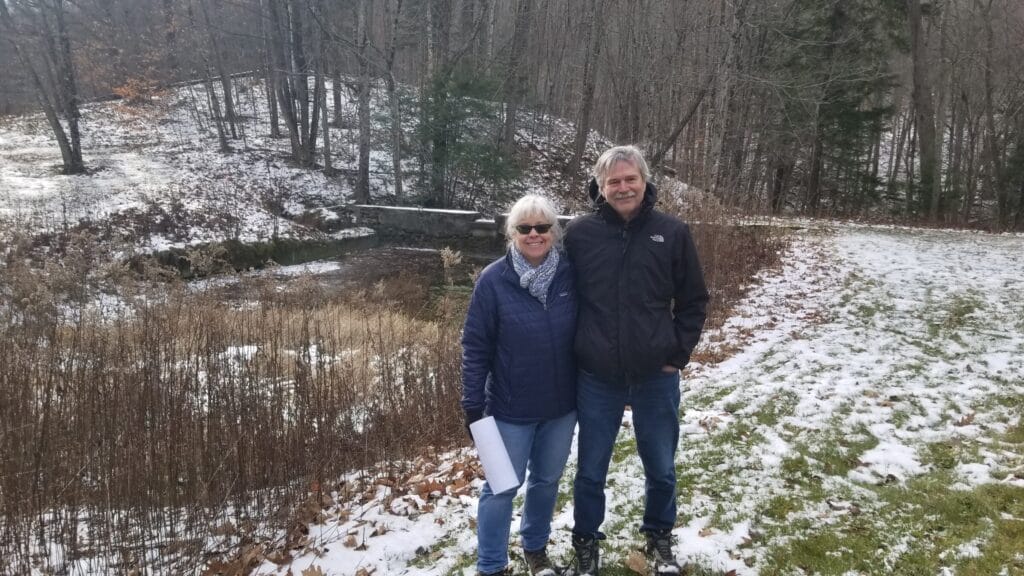Improving flood resilience through small dam removal
11 min read / October 4, 2024
Can't find what you're looking for? Please contact us.
11 min read / October 4, 2024

Jeff and Valerie valued the history of the aging dam, which was built on their property in 1830 to power a sawmill. But they recognized an opportunity to restore the blocked stream, a headwater tributary of Otter Creek, to its natural state. A small dam removal project would improve Vermont’s wildlife habitat and water quality and reduce the impact of flooding downstream, should the crumbling dam fail during a heavy rainstorm.
VLT helped them develop a plan and obtain funding to remove the dam for good. Learn more in the videos below.
Private landowners play a critical role in restoring the health of our watersheds and improving our state’s flood resiliency. Contact us to learn more about how to restore stream health on your property and reduce the impacts of flooding downstream.
Contact Us